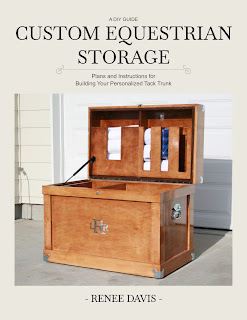Getting serious about barefoot performance...
 |
| 4-weeks post trim and looking good! |
Today I started thinking about that automatic response of mine and have realized that along the way I at some point became a barefoot performance horse owner AND I am 100% going to stick with it (again, so long as she can perform and be sound). This lunch time realization made me ponder what all I know about barefoot performance.
I know very little.
The fact that I don't know much about going barefoot isn't that surprising. I've never had a barefoot horse before. Hunters "don't do barefoot" unless they are ponies. "Going Barefoot" was always something sick, old, dying horses had to do, or was analogous to witch-craft. However, now that I have decided to keep her that way and stick with my barefoot performance horse goal I need to shrug off my hunter biases, embrace the inner wiccan, and bone up on my material (here is a great website showing some great barefoot jumpers).
Self educating facts that have lead me to stick with the barefoot thing:
- The hoof is part of the horses circulatory system. When a horse steps the hoof pumps blood back up the leg. Stick nails in a hoof, it disrupts that system, and the horse doesn't get enough blood pumping/oxygen to their heart to perform at their best when in work.
- The hoof expands and absorbs pressure when the horse moves. A barefoot horse, raised barefoot, will more quickly and easily achieve balance and coordination with their feet and be more surefooted than their counterparts. This doesn't mean a shod horse can't be balanced or coordinated, but it's just harder for them to do the same thing than a barefoot horse.
- A horses hoof, like the rest of it's body, keeps growing until it is 5 years old. If you put a shoe on it before then, the shape and structure of the hoof can become permanently be deformed.
These all seem like no brainier good reasons to keep shoes off of any horse to me, especially a young one. Of course some horses really do need shoes and I'm not anti shoe now, I'm just really going to try and keep Miss Thing barefoot if possible. Why, I wonder, is this never discussed in show barns? How did I have to end up with a barefoot horse that was difficult about trimming to find out about this? It seems like an educational deficit...and a topic could spar a whole separate blog. Back on topic: from what I've read, we are already doing two of the three basic things necessary for sound barefoot performance horses correct, albeit by accident.
1. Turnout: She is on turnout 24/7, in a large dry paddock so that she can move all day long, and then is on pasture during the days when permissible. So she has a range of surfaces to walk on and the ability to move around constantly. This happened entirely due to her utter unhappiness being in a stall all the time.
2. Trim: She gets very good barefoot trims from Rick every 5 or 6 weeks depending on schedule. Not only is he a certified Journeyman Farrier, but he also specialized in natural barefoot trimming. She has begun self trimming at long last and only needs to be tidied up now. She has very healthy frogs and heels.The self trimming started entirely on its own once she was on 24/7 turnout.
3. Diet: This is where our biggest deficit is and my research begins. Apparently sugar is bad and can make a barefoot horse "ouchy"...which I've certainly noticed when she walks over large gravel or when the ground freezes. From what I've read, that tells me she has too much sugar in her diet and we need to fix it.
Rose's diet over the summer focused on putting weight on her ever growing body for inspection this past August. She's on 5-6 flakes of high quality Eastern Oregon Orchard Grass hay, 2qts of Alfalfa Pellets, 1qt LMF Showtime, 1/4cu.vegetable oil, raspberry leaves, and vitamins. Since barefoot horses need a high fiber/protein, and low sugar diet I'm guessing this means removing the oil and showtime from her diet? I am thinking that I should replace the showtime with whole oats so that she doesn't start dropping weight. I am also not sure about the alfalfa pellets? Should I switch to timothy pellets instead? Any advice would be most appreciated.
Happy trails and swooshing tails!

Adventures In Colt Starting

It makes me so mad when people say their horse HAS to wear shoes b/c it shows and works soooo hard. My horse can do 50 miles over mountains of rock without so much as a boot. I know not all horses can do the same, but work load is not an excuse!
ReplyDeleteI think the shoes/barefoot thing boils down to personal preference, and the individual horse. One may be better than the other for a given horse, but neither is the final answer.
ReplyDeleteSmokey's soles get very soft in the wet weather up here. If I don't keep pads on his feet during the winter, he will get multiple abscesses. So, for him, barefoot really isn't an option.
Grass hays tend to have more sugar in them than alfalfa hay. Alfalfa hay is higher in protein making it ideal for a growing horse. Oats have a lot of starch which is readily converted to sugar in the gut. Oils are all fat and have no sugar which actually makes it a very good option for adding calories to put on weight. I'm not sure what LMF Showtime has, but it may be the part of her diet that is highest in sugar. I would keep her on alfalfa pellets and a low sugar grass hay, then add oil and/or beet pulp for extra calories. Stay away feeds that are high sugar and starch.
ReplyDelete